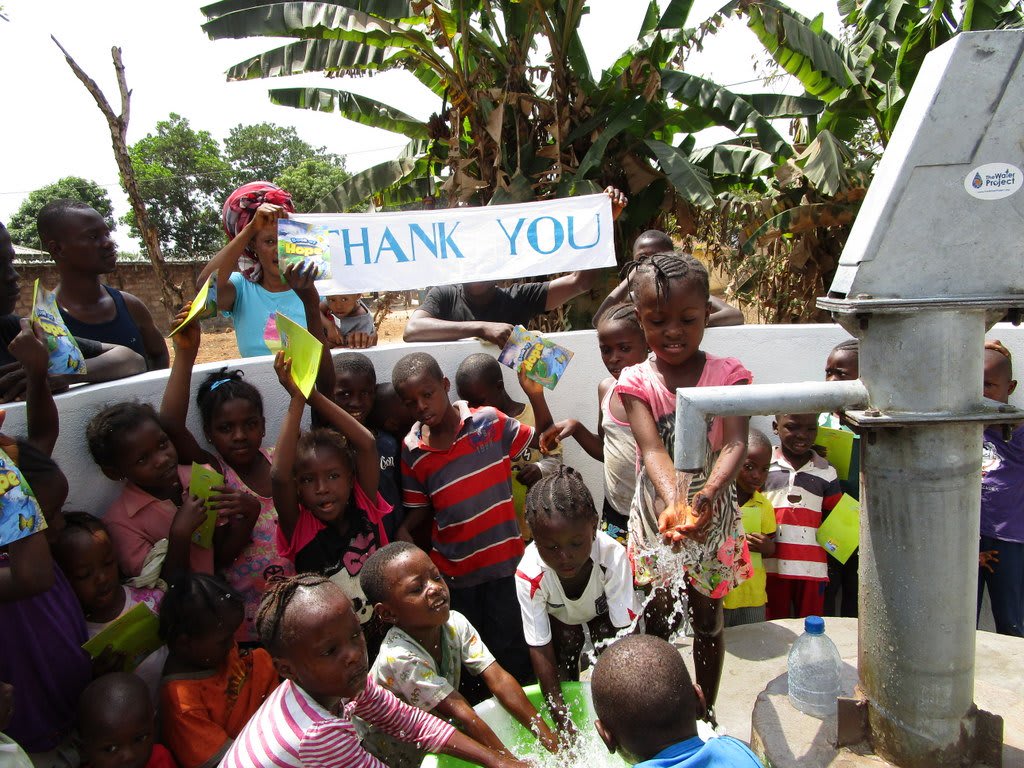Kasongha is an urban area with a good grid of roads that can host either a motorbike or a car. The area is speckled with concrete homes, so much so that there is very little vegetation left. But just 20 years ago, this area used to be covered with agriculture. In 1999, the man who owned this land worked with the African Muslim Agency to construct an Islamic school and college. The institutions became very successful, drawing large crowds to settle in the area.
The community has made a lot of progress in this short time with all its concrete buildings and business outlets, and they're even connected to the national power supply.
The majority of adults become petty traders, while others are civil servants or teachers. It's typical for more than one family to be renting a single concrete home.
As alluded to above, most community members are Muslim. There are also some Christians who have settled in the area who live in great peace with the Muslim community. Both religious groups gather for certain celebrations.
A day in a Muslim community begins early at 5:30am so that people can get ready for Suba prayer. The kids are ready with all their chores done by 7:30am so they can get to school. Adults spread out to different places to sell produce or wares, with nobody returning home before 8pm.
Water
This hand-dug well is affected by Sierra Leone's severe dry season (lasting for a quarter of the year!). It and hundreds of other wells in Africa are negatively impacted by fluctuating water tables dependent on rainfall, and we're not going to shy away. We've noticed the community takes wonderful care of this well, and it will be incredible to have it up and running with reliable clean water throughout the year.
During our visit to Kasongha, we witnessed water coming from the pump, but only a few buckets could be filled before the well would need time to rest (the well is 20 meters deep with only 1.5 meters of water in it).
When the water table becomes inaccessible with the pump, community members are forced to get their water from the swamp again. Without clean water year round, community members are still suffering and even dying from waterborne diseases like typhoid and cholera.
Mr. Lamin Bangura told us, "Those of us living here hustle under the hot burning sun and need water constantly to rehydrate... so if we do not replace this with enough clean water, our days will be numbered. We could die at any moment through minor sicknesses."
Sanitation
One of the great things about this urban environment is how each household has its own pit latrine. They seem to be well kept, too. We're still seeing the fruits of our first training with people living here; the pits are covered when not in use and some even have hand-washing stations right outside (over 60%).
Even the water containers are clean, and drinking water is kept up off the ground.
100% of households have clotheslines, all but one or two have bathing shelters, and most people have garbage pits. However, dish racks still need to be adopted here.
Here is what we plan to do about it:
Training
There will be hygiene and sanitation training sessions offered for three days in a row.
After our visit, the hygiene and sanitation trainer decided it would be best to teach community members how to build a tippy tap (a hand-washing station built with a jerrycan, string, and sticks). They will use these tippy taps for hand-washing demonstrations, and will also teach about other tools like dish racks and the importance of properly penning in animals.
Well Rehabilitation
We've developed an innovative method to convert hand-dug wells into boreholes. We are hoping we can drill down an additional 30 or more feet to make this a water source that lasts through all seasons.
The pump will be removed, and we either drill from the top or a man will be lowered inside with a hand auger. This hand auger will allow the team to drill several meters deeper to hit a sufficient water column that will ensure the well supplies water throughout the drier seasons. As the team drills, casing will be installed, transforming this hand-dug well into a pseudo-borehole. PVC piping will connect this lower system directly to the pump, a construction that we know will also improve the quality of water.
Once this plan is implemented, everyone within the community will have access to safe drinking water in both quality and quantity, even through the dry months.
This project is a part of our shared program with Mariatu’s Hope. Our team is pleased to provide the reports for this project (edited for readability) thanks to the hard work of our friends in Sierra Leone.

 Protected Dug Well
Protected Dug Well


































